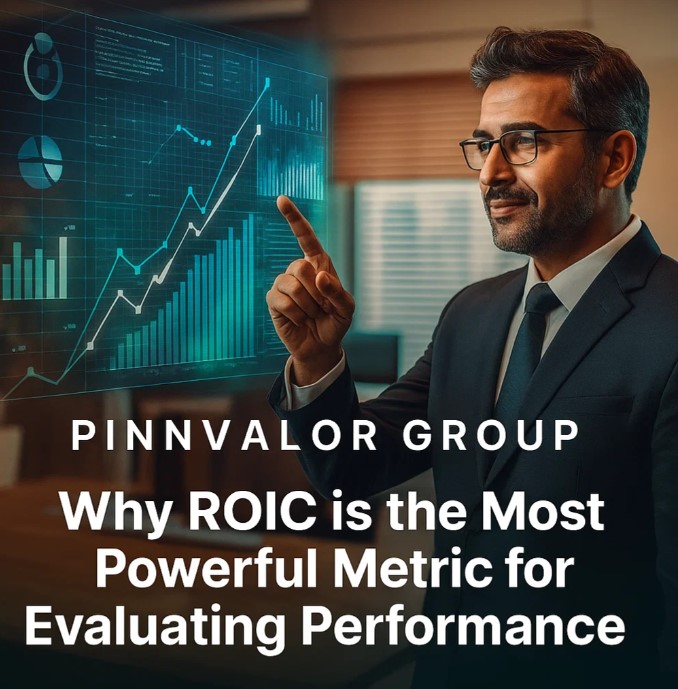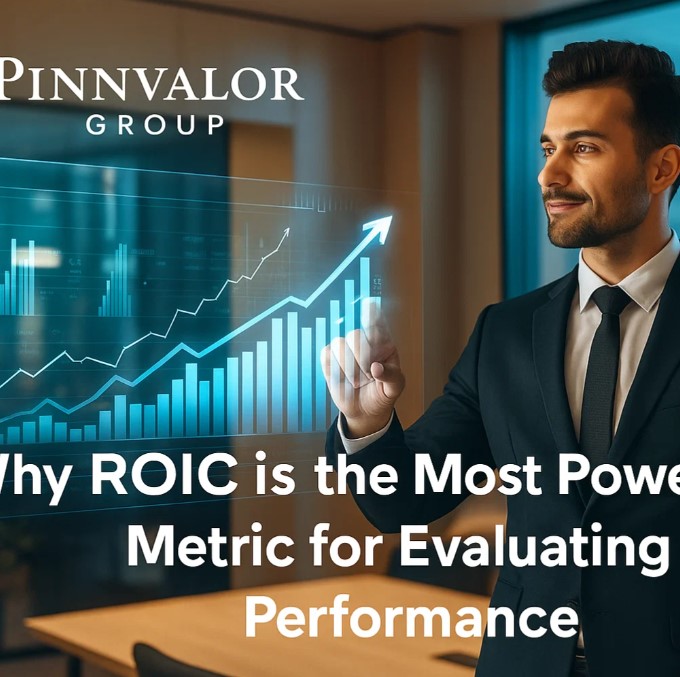
Why ROIC is the Most Powerful Metric for Evaluating Performance
In the world of finance and business management, measuring performance is more than just looking at revenue growth or net profit. These figures can tell part of the story, but they often fail to show the true efficiency of a company in creating value for its shareholders. That’s where Return on Invested Capital (ROIC) comes in—a metric that provides a deeper, more accurate insight into a company’s real performance.
How well is your business really using its invested capital?Why does SA 540 matter in today’s fair value-driven financial reporting world?
ROIC isn’t just a number—it’s the lens to see true value creation. Measure what matters, not just growth.
What is ROIC?
ROIC, or Return on Invested Capital, measures how effectively a company is using the capital invested in its operations to generate profits. It answers the question:
"For every dollar invested in the business, how much profit is generated?"
Mathematically, it’s expressed as:
ROIC = Net Operating Profit After Taxes (NOPAT) / Invested Capital
Where:
- NOPAT = Operating Profit × (1 – Tax Rate)
- Invested Capital = Total equity + interest-bearing debt – non-operating assets
Unlike other metrics like ROI or ROE, ROIC accounts for both equity and debt, giving a holistic view of how all invested capital is being used to generate value.
Why ROIC is Superior to Other Metrics
1. Shows True Efficiency
Revenue growth and net income can increase simply by taking on more debt or selling more products, but that doesn’t always mean the company is creating value. ROIC, on the other hand, directly measures how efficiently the business uses its capital, separating growth from value creation.
2. Aligns with Shareholder Value
A company can grow rapidly but still destroy value if it earns less than its cost of capital. ROIC compares the return on capital to the Weighted Average Cost of Capital (WACC). If ROIC > WACC, the company is creating value. If ROIC < WACC, it’s destroying value, regardless of headline growth numbers.
3. Less Susceptible to Accounting Manipulations
Metrics like earnings per share (EPS) can be influenced by share buybacks, depreciation methods, or tax strategies. ROIC focuses on operating profit and invested capital, which makes it harder to manipulate and more reflective of underlying performance.
4. Facilitates Comparisons Across Companies
ROIC standardizes performance measurement across industries, allowing investors to compare companies of different sizes and capital structures on an apples-to-apples basis. This is crucial for making informed investment decisions.

How Companies Can Improve ROIC
- Increase Operating Efficiency – Streamline operations to increase NOPAT without a proportional increase in capital.
- Optimize Capital Allocation – Invest in projects with returns higher than the cost of capital.
- Reduce Excess Capital – Minimize idle assets and optimize working capital.
- Debt Management – Use debt wisely; excessive leverage can distort ROIC and increase risk.
ROIC in Practice: A Real-World Example
Consider two companies, A and B, each generating $10 million in profit. Company A has invested $50 million in capital, while Company B has invested $100 million. The ROIC would be:
- Company A: 10 ÷ 50 = 20%
- Company B: 10 ÷ 100 = 10%
Even though both companies generate the same profit, Company A is twice as efficient in using its capital. This demonstrates why ROIC provides a clearer picture of value creation.
Conclusion
ROIC is more than just a metric; it’s a lens through which investors and managers can assess true business performance. By evaluating how effectively a company uses its capital to generate returns, ROIC separates superficial growth from genuine value creation.
For companies striving to maximize shareholder wealth and for investors seeking smarter decisions, ROIC isn’t just powerful—it’s indispensable.
